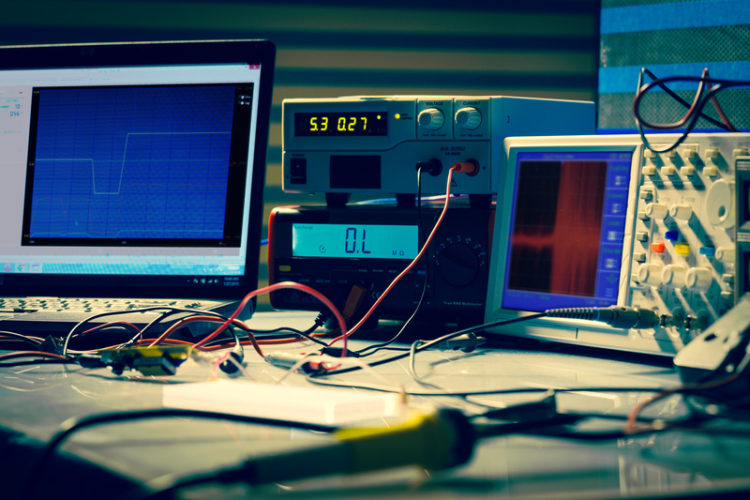The oscilloscope is one of the most important test equipment devices that engineers use almost everyday. There are times, however, when the measurements taken using this device are not as useful or accurate as they might otherwise be. Thus, it is important to take some simple precautions to ensure that the measurements taken are useful and accurate.
 Although a number of the precautions arise from knowing the limitations of the use of an oscilloscope, other precautions can be deduced from the way the oscilloscope and the equipment, including its probes, are used.
Although a number of the precautions arise from knowing the limitations of the use of an oscilloscope, other precautions can be deduced from the way the oscilloscope and the equipment, including its probes, are used.
First, oscilloscope users should beware of the limitations of the oscilloscope’s bandwidth. It has to be emphasized that an oscilloscope must have sufficient bandwidth to effectively accommodate the frequencies within the signal and accurately reproduce the image of the waveform.
Second, users must also ensure the correct triggering of their oscilloscope to enable them to clearly view waveforms. And since it is necessary to view various complex waveforms on an oscilloscope, using the automatic trigger feature of the oscilloscope may not always enable it to trigger correctly. Hence, it is necessary to consider utilizing the external trigger and use the pulse of other suitable waveform of the circuit under test. This allows the oscilloscope to achieve better signal and display the waveform’s optimum image.
Another important item that oscilloscope users must take note of is the use of the proper oscilloscope probe. The performance of the probe is just as important as the specification of the oscilloscope. Using a poor oscilloscope probe can impair the performance of the entire test equipment. Comprised of the probe tip, shielded wire and the compensation network, an oscilloscope probe provides a simple way of presenting the signal of the item under test to the oscilloscope’s input.
Oscilloscope users should not also forget to calibrate the oscilloscope probe before using them. An integrated calibrator is included in almost all oscilloscopes to ensure that the response of the probe is flat. Providing a square wave output, the calibrator comes with a small preset adjustor on the probe. Once the oscilloscope probe has been connected to the calibrator’s output, the shape of the waveform viewed on the screen should be adjusted to a perfect square. If the high frequency of the oscilloscope probe is down, then the edges of the square wave should be rounded and if it is up, the edges of the square wave should show overshoot. Making the adjustment ensures the correct performance of the probe.
Finally, oscilloscope users should beware using ground clips when taking high speed measurements.
An earth or grounding clip provides oscilloscope probes the earth return to the circuit under test. While it is adequate for most low frequency tests and measurements to take the clip to a convenient earth test point on the board, such is not the case with high speed tests. The clip’s wire introduces inductance and ringing into the circuit which consequently affects the measurements.

Leave a Reply
You must be logged in to post a comment.